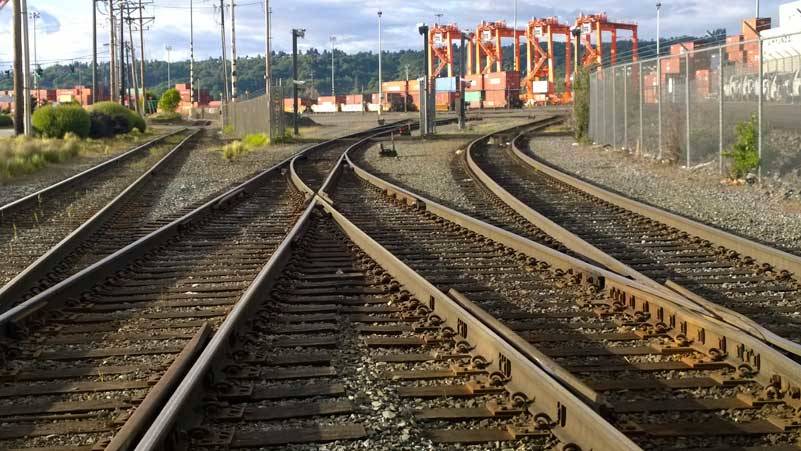By Morf Morford
Tacoma Daily Index
For an economy built to last we must invest in what will fuel us for generations to come. This is our history – from the Transcontinental Railroad to the Hoover Dam, to the dredging of our ports and building of our most historic bridges – our American ancestors prioritized growth and investment in our nation’s infrastructure.- Cory Booker
A key premise of money is that you can do three things with it; save it, spend it or invest it.
At that level, it is not that complicated.
Except that like everything else, from friendship to food to shoes, once you add human beings to the mix, it becomes absurdly complicated.
Saving, from the point of view of the saver at least, is stunningly simple; you set money aside for a future use.
You don’t spend that money today, or even tomorrow, but hold it with the intent of a greater, more urgent, eventual necessity – the proverbial rainy-day fund.
It’s a simple, sometimes life-saving approach to money management. But for whatever reason, few Americans do it.
So the real choice that faces most of us is between spending and investing.
And as with every other aspect of money, or even life, this too gets more complicated the closer we look at it.
To put it simply, money that is “spent” is money that is gone.
The dictionary definition of “spent” after all, is “depleted” or “emptied”.
An “investment”, on the other hand, is money that is expected to bring a future return; money that is actually “working”.
That might sound like a set of simple, clear and distinct definitions.
And in an economics class, it might be.
But in the muddle of real life, or in any economic decision or action, from buying dinner to establishing corporate budget scenarios, the once clear distinction becomes yet another battleground for competing, if not conflicting, values, intentions and long term (and short term) goals and, many times, fierce assertions of identity, faith or destiny.
Every municipality or nation, even, I would argue, every family, has, as its primary investment, infrastructure.
The word “infrastructure” is one of those two-dollar words with layers of intricacies, but at its base, it is very simple; infrastructure is what could be called the foundation or super-structure that allows anything, everything, to be built or to function.
In other words, infrastructure is what we don’t see that allows everything that we do so to actually work.
Water comes out of a faucet because of a vast network of decisions and processes, hundreds, if not thousands of miles away.
Of those hundreds, if not thousands of decisions and actions that produced that faucet of flowing water, more than 99% are invisible and far beyond the reach (or imagination) of the individual turning the faucet.
Picture a child turning a faucet; the child believes that they make the water turn off or on.
If you’ve been around a child and a bathroom sink, you’ve probably noticed that they consider a faucet something magical.
They turn water off and on with fascination as if they are watching a miracle.
It is a miracle.
That water, for most of us, came from many miles away, was filtered, stored, transported and delivered through a near inconceivable network of ponds, channels, causeways, flumes, aqueducts, pumps, towers and pipelines until, in the infrastructure equivalent of a miracle, it is delivered to our home faucet.
To that child, and to be blunt, to most of us, that faucet is all we see and all we know of the intricate, complicated, and yes, expensive production of home delivery of that essential, yet seemingly infinite resource we all take for granted as we use it every day.
And the same goes for virtually every other aspect of everyday life we also take for granted.
From electricity to working traffic lights to Wi-Fi to grocery stores – virtually everything we touch or see or eat has been through dozens, if not hundreds of other hands, processes and decisions before it reached us.
The simple word for all of those processes and filters is infrastructure.
In my mind, and at the core of any and every civilization, is the principle that infrastructure is the best investment possible.
The problem though, is that in the eyes of many politicians and voters, like children, water comes from a faucet, not from a labyrinth of sluices, pipelines and process that require construction and maintenance and a near-infinite level of supervision, analysis, projection and decision-making.
To that child, and too many policy makers, the money invested in infrastructure is out of sight and gone; it is spent, not invested.
It is difficult to imagine a view more short-sighted, lazy and self-destructive, yet we see it almost every day.
A dollar not invested today will cost ten tomorrow.
Virtually every problem overwhelming us today, from homelessness to home price inflation to pandemics or addiction could have been dealt with (comparatively) easily many years ago.
Investment is not money “gone” – it is money working (largely) invisibly on our behalf and for our well being.
From education to public safety to freeways to that next drink or bite of food, the network that we don’t see, is by far the most important.
That final point of delivery, that proverbial faucet, that act that we see, the one right in front of us, is just one link in a long, long chain, maybe even the least important.
When you run your faucet, or turn on the lights, or use Wi-Fi, try to imagine that virtual army of technicians, processes and decision-makers that brought it to you.
It’s not magic – it’s infrastructure.





